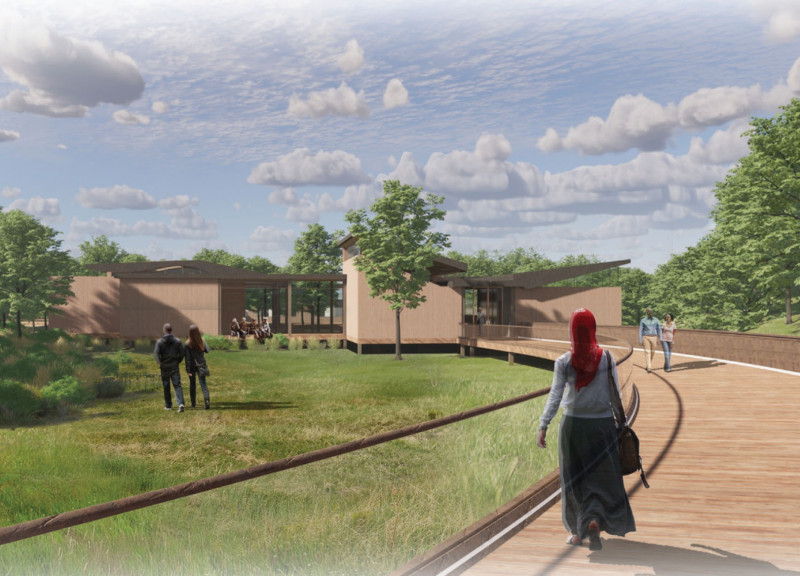5 key facts about this project
The design located in Washington, D.C., serves as a sanctuary for individuals approaching the end of life, particularly those who have been abandoned or displaced, including the incarcerated for life. The intent is to create a space where care, companionship, and dignity are at the forefront. This approach challenges traditional hospice settings, which often emphasize clinical environments, and instead provides a sacred setting that enhances the sensory experiences of its residents.
Design Concept
The main idea behind the project is to create a calm and reflective atmosphere. The layout of the riverfront campus incorporates dense vegetation, which provides a natural barrier. This design promotes privacy and tranquility while leading residents to peaceful courtyard spaces. These areas are meant to foster community engagement while also offering room for personal reflection.
Caregiver Spaces
Central to the design is a courtyard building where caregivers, known as gentle sisters, provide essential therapeutic services. The arrangement of this building allows residents to interact while also having access to quiet spaces for personal solace. This careful organization supports effective caregiving, ensuring that the individual needs of each resident are met in a comforting environment.
Connection to Nature
The pathways throughout the campus are designed to encourage movement and connection with the natural world. These walkways allow residents to experience elements like sunlight, wind, and water, reinforcing their connection to life outside. The project includes private rooms for those who desire solitude as their health declines, offering a tranquil retreat while maintaining a peaceful atmosphere.
Sensory Elements
Natural light plays a significant role in the design of the private rooms, featuring large glass windows that provide views of the surrounding landscape. Additionally, a square skylight is included to encourage contemplation, allowing residents to gaze upward and connect with a sense of the divine. Attention to these sensory details enhances the experience and comfort of those living in the hospice.
Natural wood is used for the walls and flooring, adding warmth to the interior spaces. This choice of material contributes to an inviting atmosphere, emphasizing the project's focus on sensory experience and creating a peaceful environment suitable for reflection and repose.



















































